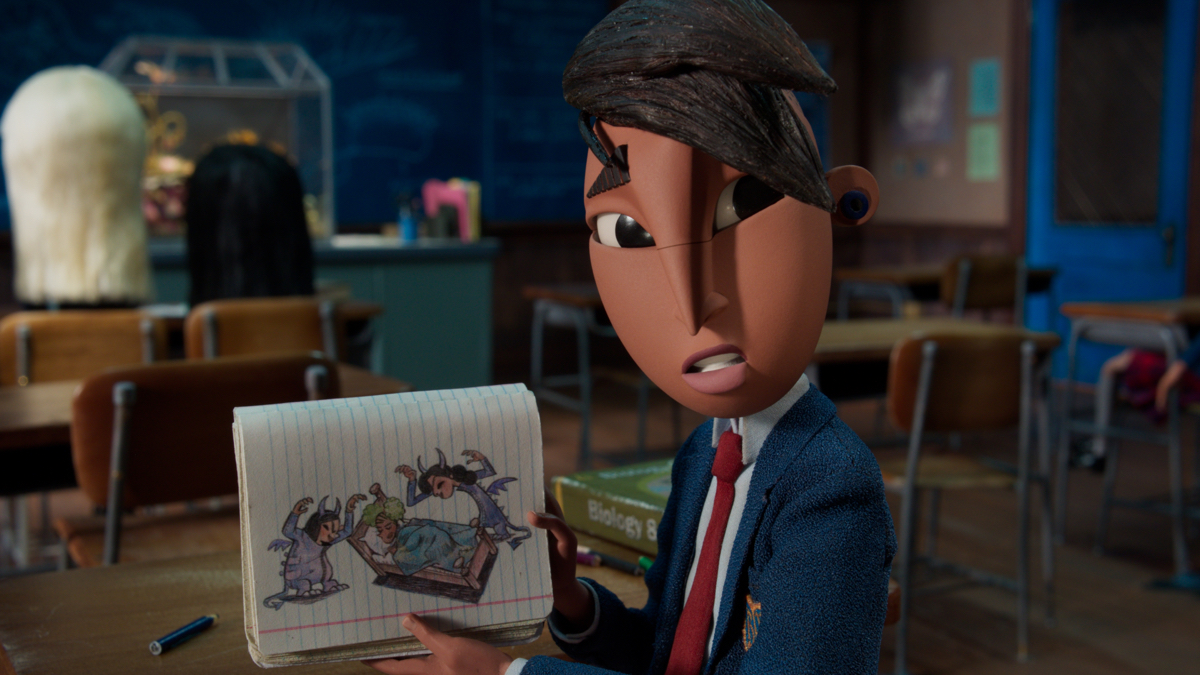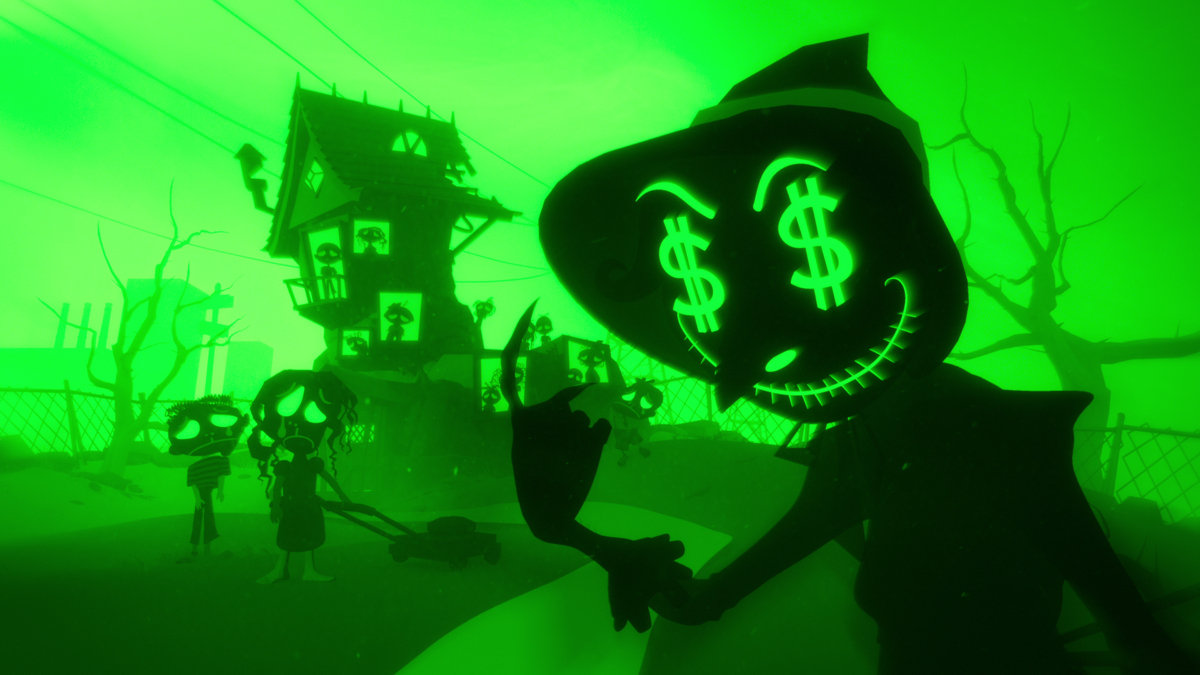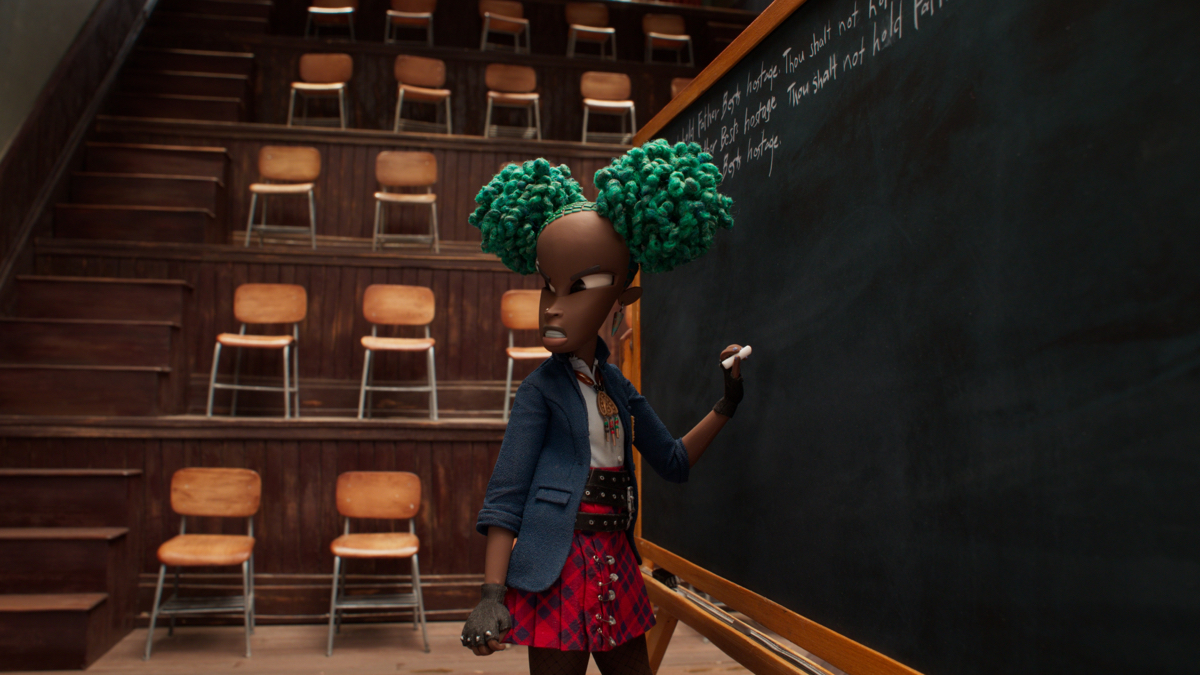Henry Selick on the art of stop-motion and the making of his ‘Wendell & Wild’.
Just last week, a bunch of journalists were shown the first 30 minutes of Henry Selick’s upcoming stop-motion animated feature Wendell & Wild, which streams on Netflix from October 28th.
After watching that footage, befores & afters got the chance to chat to Selick, and I took the opportunity to dive into my first reactions to the stop-motion, which definitely channels the director’s prior outings like The Nightmare Before Christmas and Coraline. It felt incredible hand-made and grounded, something I asked Selick directly about, as you’ll see in the interview below.
First, check out the new trailer to get a handle on the story and then dive into my conversation with the director.
b&a: When I was watching this first 30 minutes, my first reaction was to it was, how tangible and tactile it was–and I don’t mean this in a bad way, Henry–but how not ‘perfect’ the animation was. I wanted to ask you about how important that was for you as you went into production on this film?
Henry Selick: I’m glad you noticed. That was a very definite decision where I felt like stop-motion–especially the work of Laika, where I made Coraline–I felt it had gotten so slick and perfect that there was no difference between it and CG. And so you question, well, why do we do it, if it looks like that? It’s a much harder way to do CG. So I wanted to pull back from that sort of perfection and leave more mistakes in.
For the smoothest animation, you’ll shoot 24 separate poses per second. But you can still get pretty good performance at 12 frames per second, and sometimes even less. So I mixed in more shooting, not just on ones but also on twos, sometimes threes. And it was a very deliberate feeling. I want people to still know this stuff exists. Now, we still use tons of effects and computer stuff to build the worlds around them, but for the main performers and being on the sets that were built, I wanted some flaws to show.

b&a: But you even went so far, unless I’ve totally got this wrong, as leaving the replacement faces with the seam lines, right?
Henry Selick: Yeah.
b&a: That’s something I really liked.
Henry Selick: On Coraline, which was the first film to use 3D printers to create some of the replacement faces, we used to hand-sculpt every single expression for those types of characters. For some types of characters, we’d have sort of rubbery faces with metal bits under that you could squish and move around, but usually main characters were replacements.
We found with 3D printing that, well, we could save a lot of time to create in-between expressions from the key expressions and print them out and they looked beautiful and the seams were tight, but they were very, obviously, there. I did not want to paint them out in post. I really fought hard to keep it, but the powers that be said, ‘No, that’s crazy. You have to digitally paint them out.’ And so that was another choice.
I know, because other people had told me having watched Coraline before the seams were painted out, said, ‘Well, we see them and then in five minutes, we never noticed them again.’ And I took it on faith that that same thing would happen here. I wanted to leave them in and trust that the audience would not see them–that little extra work for them to not see them after a while would help them be involved with the movie a little more.

b&a: Actually, since you made Coraline, I wonder how much, if at all, you felt the technology of stop-motion had changed just in terms of 3D printing or even the visual effects techniques that can aid in what you do. Tell me about what you’ve noticed had changed in 10-plus years.
Henry Selick: Honestly, the changes are smaller. The big changes, the huge changes, were from Nightmare Before Christmas to Coraline. Those are the biggest ones because that was shooting actually on film, 35mm film, and huge cameras, not having the ability to paint out supportive rigs if a character has to jump or fly. Now we can put them on a metal stand and animate it and then paint that out digitally. Back then, we had to hang them from wires with a rig above and try to steady it for each frame.
But from Coraline to now, it’s kind of just refinements of the existing breakthroughs. There’s a whole company and a system called Dragonframe that was built and designed for stop-motion. That’s Jamie Caliri and his brother. Jamie’s an incredible animation director himself. That’s a new thing. And that’s really useful just for organizing and managing and shooting the films.
The rest of it, not so much. I think it’s more about creative choices and what do you choose to clean up, how far do you clean things up and how much do you leave it? It’s more about aesthetics than technical breakthroughs.

b&a: I’m curious about how you brought this story together. What were the beginnings of it? How did you go from concept/idea to script and then what were the first visual things that you did with this film as well?
Henry Selick: It was a very long period of time from the seed of the idea. It was 20 years ago. My sons who are grown men now were little, two and eight, and they would act like demons sometimes. I mean, just like all kids, but they would sometimes seem like they’re possessed. And so, I did a little sketch of them as demons.
And from that sketch, I ended up writing a short story about two demon brothers. It wasn’t about kid demons or anything. It was just sort of like, well, ‘I’ll do a story’. And it was about these two demon grifters named Wendell and Wild facing on Earth, this nun, Sister Helley. Back then, I called her a demon duster. And then her assistants Kat and Raul.
The core of the idea and the core of the characters was all done way back then. And then I didn’t really do anything with it. I put it aside and my manager, Ellen Goldsmith-Vein, who’s a producer on Wendell & Wild. She would often bring up, ‘What are you going to do with that story?’ I said, ‘I don’t know. Tell me what to do.’
But then in 2012, this new series, the comedy show Key & Peele came on and I don’t know if it was available in Australia or not, or if –
b&a: Yeah, I’m a big fan.
Henry Selick: I was in awe. I love what these two people, their creativity, their range, they can tackle any subject. They can play any ethnicity. I’ve never seen anything like it. I would consider them the best comedy duo that I’ve ever seen. I said I would love to work with them, I’d love for them to bring some of that comedy, which I’m not known for, to a project of mine.

So I reached out and they were both interested in doing something. Jordan Peele, he wanted to meet face-to-face and talk. And we met up. Turned out he’s a huge fan of stop-motion animation. He loves it. He knows all the films. He knew all of my work and he wanted to hear about projects and I pitched Wendell & Wild. I gave him the pages and he got back to me and said I think this could really be something and I’d like to be more than a voice. I’d like to be a creator, like a co-writer, and a producer. And I’ve got this new company, Monkeypaw Productions. He hadn’t made a film yet, his own film. I said, ‘Sounds good to me.’ And so we started to collaborate.
I probably met Jordan in 2015 and it took a few years. We worked on it for a while. It was part-time. Right from the start, I wanted the two demons to look like Key and Peele. It was coming up on their last season and I thought it’d be fun and good for the film if the demons looked a bit like the voice actors.
I did a few sketches. I mean, I can draw to convey an idea, but then I found this guy, Pablo Lobato, this Argentinian illustrator who’s probably the best caricaturist in the world. And we got together and I said, ‘Well, I could pay you from my pocket if you do a few things.’ He said, ‘No, no. I love this project.’ Luckily, his English was pretty good because my Spanish, I took it for four years and it’s terrible.
But he started doing some work that was beautiful, for free. But it got to the point where Jordan says, ‘Look, I’ve got to take off for that film that I’ve been writing. This horror company, Blumhouse, is doing it. And he went off and did it and then the film’s about to come out and he says, ‘We got to go out now! This week! We’ve got to pitch Wendell & Wild because, my film, it could be a bomb! We’ve got to set it up as fast as we can.’ I said, ‘Well, if your film’s a bomb, it won’t matter if we set it up because then it negates it. But I read your script. It’s going to be okay. Let’s just wait and see what happens.’

Well, the world changes. His film came out–it was of course Get Out–and it was a huge hit. It was really well done. And then we went out and we pitched the film. It had evolved a lot. Jordan had convinced me to switch the protagonist to young Kat, not Helley. He said, ‘I don’t care about anyone else, but I want Kat to be a person of color. She could be black, brown, yellow, red, but I want her to be someone that I would have wanted to see on screen when I was a kid.’ And I didn’t have any issue with that. I said, ‘Okay, let’s make her African American.’ And then from there, I just went, well, what else would be kind of fun?
We built a cast around a different approach. And it’s as much for artistic choice as having different colors and different ethnicities. Jordan was also very, very smart. He said, ‘This movie can never be about race because that will be like a lightning rod and cause trouble.’ So we can have people of different races, but the conflict can never be about race. He was right. And we never let it be.
So eventually, his movie was a huge hit. Everyone wants to meet with him. We knew that ours was a risky film and we only went to a couple places. Netflix was the place that said, ‘You want to go with us because we love this. And if we love a project and we love the people behind it, we guarantee we’ll make this film. So basically you’ve got a green light, if we say yes now. Now, it could take a few years to get there.’
And it sure as hell did, but we went with them and everything didn’t just fall into place. There was a lot of struggle. I was always the one to take the first pass at a treatment of the screenplay and then Jordan would rework it, but he was always heavily involved in the story.
Then we put together a studio and set out finding and hiring everybody. We finally get up on our feet and then the pandemic hits and we have to close the studio. We lost almost a year. Finally, we then crawled back in with our masks on and got back to work. Animators are patient people. So we never give up.

b&a: I’m very aware of the crazy amount of stop-motion in production in Portland, Oregon, where of course you’ve been working from. I guess that’s an interesting observation in terms of the health of the stop-motion industry. What’s your observation about the appetite and health of it right now?
Henry Selick: The health of stop-motion is always precarious. No matter what it might look like this week, it’s always precarious. There’s been a few waves of it and then it always goes away. It’s never been easy for me to get one of these going, except for James and the Giant Peach. That was easy to get going because it was right on the heels of Nightmare Before Christmas. It’s never had the financial success of the big CG films. But the good ones, they usually make their money and then they stick around and they have a long, long life.
Why? Maybe it’s so old-fashioned, it never grows old. It’s old magic already, so it doesn’t age. Laika made Portland the home in the United States for stop-motion talent. So, we set up there because that’s where the talent is. And then Guillermo del Toro, they set up his stop-motion version of Pinocchio there also, another Netflix show. So for a brief moment of time, there were three going at once in the same town.
b&a: Amazing.
Henry Selick: But I’ll tell you this: our football team always beat the ‘Pinocchio’ team…



















